- SHOP ONLINE
- AT THE GARDEN CENTRE
- BE INSPIRED
- LANDSCAPE SOLUTIONS
- EMPLOYMENT
- ABOUT US
Menu
- SHOP ONLINE
- AT THE GARDEN CENTRE
- BE INSPIRED
- LANDSCAPE SOLUTIONS
- EMPLOYMENT
- ABOUT US
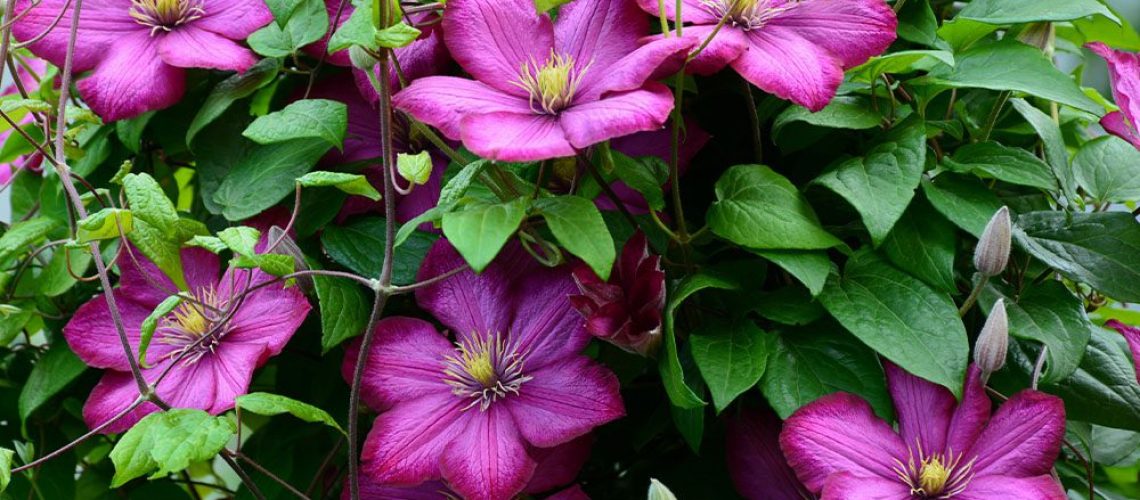
Clematis is one of the most popular flowering vines for Ontario gardens. They’re vigorous growers, so they quickly climb up fences and facades, or decorative structures like trellises and obelisks, creating a wall of fabulous texture and vivid colour. To ensure healthy, lush growth, you’ll want to prune your Clematis at the right time, but determining the best time for pruning requires a bit of background information.
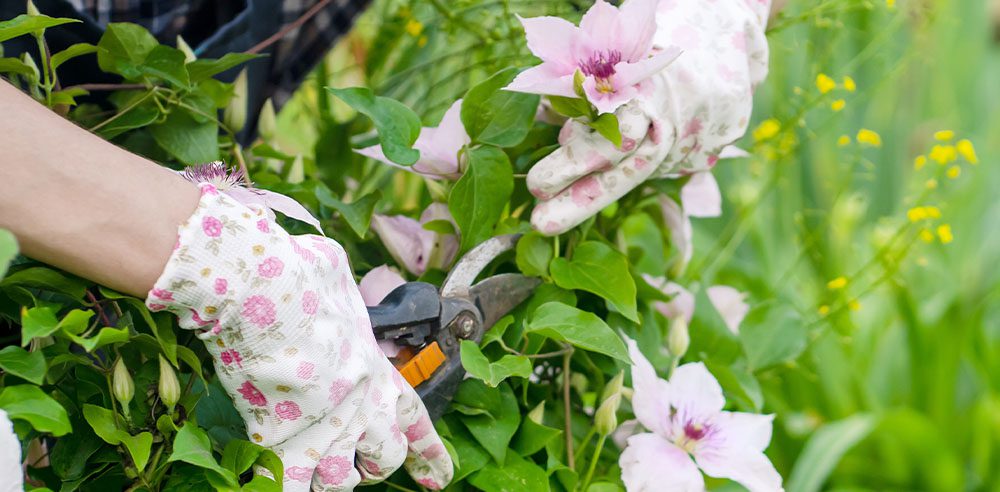
The timing of your pruning depends on which variety you are growing. Clematis plants fall into three different categories based on when they burst into bloom:
Each of these Clematis groups has different optimal times for trimming, so once you’ve determined which variety you’re growing in your garden, use the following instructions for proper pruning.
Fun Fact: Since there are varieties of Clematis that bloom in spring, summer, and fall, you can have blossoming vines in your garden for as long as six months if you plant a mix of varieties!
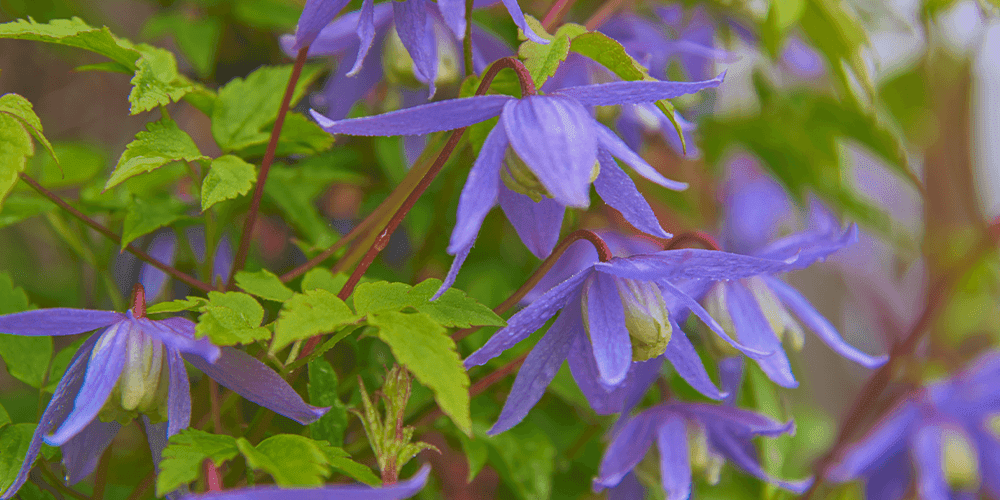
Spring-blooming clematis blossoms on old wood from the previous year’s growth in early spring. If you prune in late winter or early spring, you will remove all the flower buds—you don’t want to do that! Instead, prune in summer after your plant has finished blooming.
Generally speaking, Group 1 varieties don’t need very much pruning. Your best bet is to remove any dead, diseased, or damaged branches. If your plant has become quite large and unruly, you can make some cuts to improve the shape, but overall these varieties are pretty low-maintenance. Make shaping cuts at an angle, directly above a node, or “axil bud.” These are the nubby parts on the stem where buds branch outward.
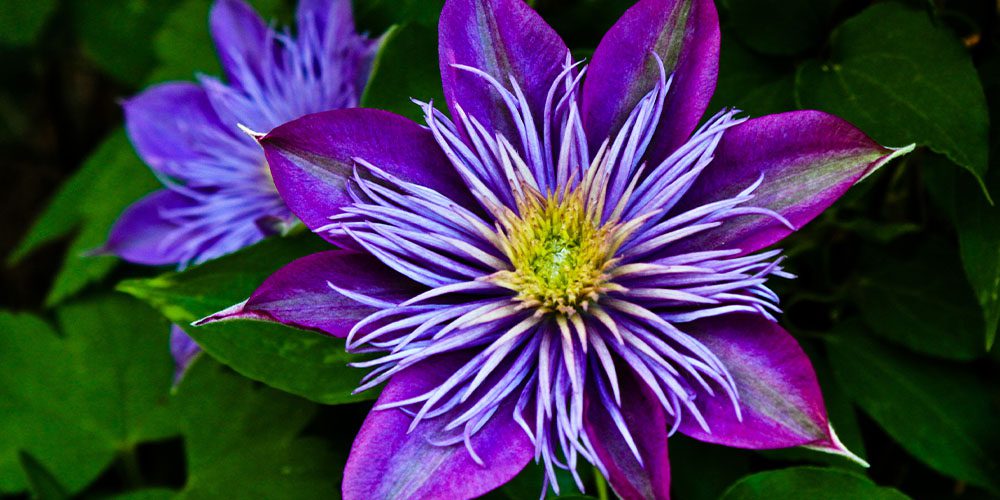
These varieties bloom in spring and again in summer, first on old wood and the second round on new wood. Prune them in March, with some additional pruning after the first flush of blooms to a pair of buds midway down the stems to encourage repeat blooming. If you neglect to cut back this Clematis in late winter / very early spring, its spring growth will be spindly and weak.
Do not hard prune varieties from Group 2—just focus on light trimming, reshaping and removing damaged growth. Make diagonal cuts above healthy buds with a pair of sterilized shears.
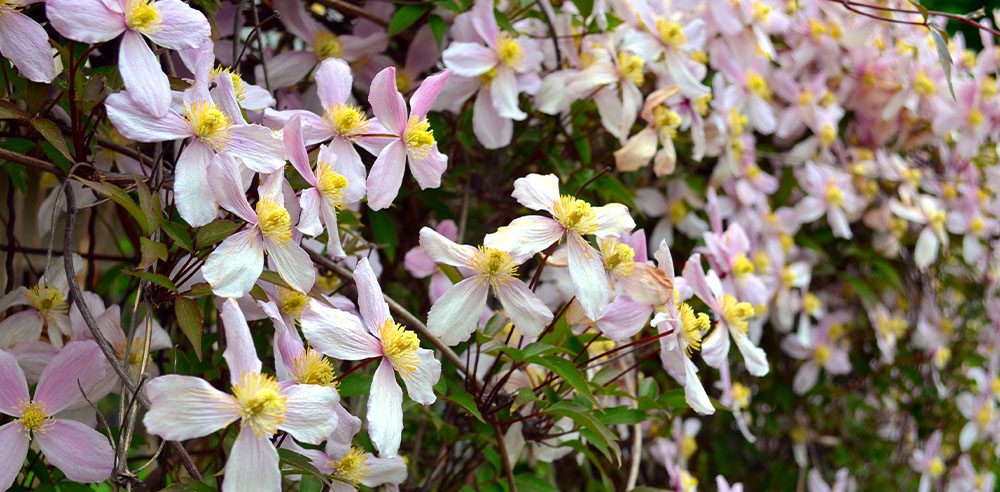
This is the only group that benefits from hard pruning, which requires you to cut back the plant dramatically, so it’s about a foot off the ground. It blooms on new growth, so a significant cutback in February or March is necessary to ensure the new growth is lush and healthy. If you leave a fall-blooming Clematis alone, the growth will be a tangled mess, and you won’t get very impressive flowers.
To properly cut back a Group 3 Clematis, take your sterilized shears and make diagonal cuts right above the nodes along the stems, about 30–45 cm off the ground, removing all the dead plant material above it. If the dead material is free of disease or fungus, you can toss it in the compost bin.
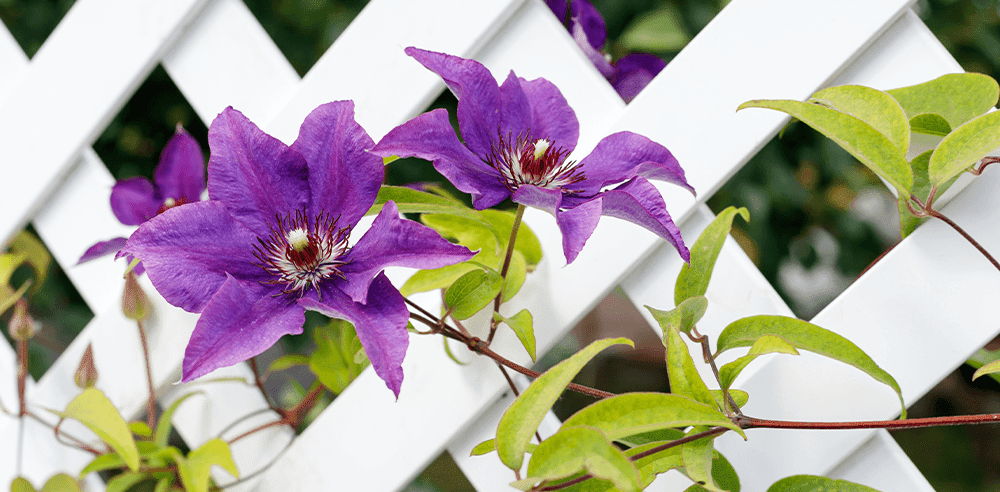
Want to grow Clematis in Guelph? It’s so easy, and the results are nothing short of magnificent. Royal City Nursery has a fabulous selection of varieties with different bloom and prune times, with so many stunning colours from which to choose. Feel free to ask any of our staff for tips on caring for this pretty vining plant—we’ll be happy to give you a quick crash course!
HOURS
JOIN US YEAR-ROUND!
Hours of Inspiration
Monday to Friday: 9am – 6pm
Saturday: 9am – 5pm
Sunday: 10am – 5pm
BE INSPIRED
Sign up for our E-Newsletter to receive garden tips, landscaping advice and more, delivered right to your inbox.
Sign up today!
Find Us